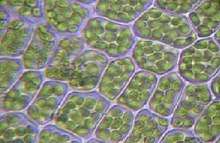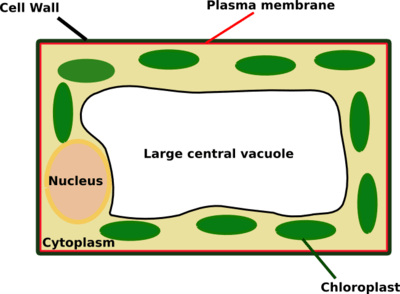| EASY |
Cells

All Living things are made up of small subunits called cells.
What is a cell?
- It is a sack of water that holds in the chemicals that make up life.
A cell is the smallest unit of life. If you look at living organisms under a microscope then you will see they are made up of little square or ball-shaped subunits. Robert Hooke, a British biologist and early microscopist, gave cells their name. While looking at cork slivers under a microscope, he saw that cork was made up of squares that looked like the little rooms (cells) that monks slept in. He called these structures cells.
Later biologists noticed cells everywhere. Two German scientists (Schleiden and Schwann,) formalized this by stating what they called the cell theory. The cell theory simply says that All organisms are composed of one or more cells..
In fact, the modern cell theory has four points.
- All organisms are composed of one or more cells.
- All cells come from preexisting cells.
- All vital functions of an organism occur within cells.
- Cells contain the hereditary information necessary for regulating cell functions and for transmitting information to the next generation of cells.
What types of cells are there?
Cells are divided into two types, Eukaryotes which have a large object called a nucleus in them and Prokaryotes which do not.
Most prokaryotes are very small. Prokaryotes include the two kingdoms: Bacteria and Archea. All of the rest of the kingdoms are Eukaryotes. This includes, Animals , Plants, Fungi, and Protists.
What do cells look like?
Cells are surrounded by a thin oil layer called the plasma membrane (sometimes called the cell membrane).This separates the inside of the cell from the outside. Some cells also have a firm box around them called a cell wall that keeps its structure and prevents it from bursting. The water that fills a cell is called the cytoplasm. Inside a cell information is stored on something called a chromosome. It encodes the information needed to make and run a cell, like an instruction book. This chromosome can only be seen as an area that stains dark, called chromatin.

Eukaryotic cells hold their chromosomes in a structure called a nucleus which has its own oily membrane surrounding it. They also have many other membrane bound structures inside them called organelles or little organs. Some organelles found in eukaryotic cells include ribosomes, vacuoles, mitochondria, and chloroplasts.
Cells have different shapes depending on what function they have in the organism, and what kind of life cycle the organism has. A plant leaf cell takes light and uses it to make sugar. To do this, it moves organelles called chloroplasts around so that they can get as much light as possible.To help the cytoplasm flow in circles, the center of the cell is filled with a bubble of water called a vacuole. This large central vacuole is one way to identify plant cells.
A human sperm cell carries its chromosomes, found in the nucleus, to an egg cell in order to make a new baby. The function of the sperm cell helps determine its appearance. It has a large whip-like tail called a flagella that it uses to swim. It also has many energy producing organelles called mitochondria that help power the flagella like gasoline powers a motor.
Cells come in a great variety of shapes and sizes, but overall they have the same types of structures inside them.

Reading